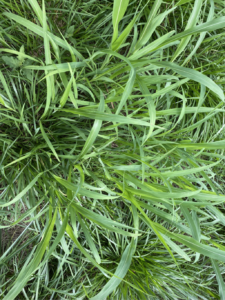Johnsongrass in Pastures & Hayfields
go.ncsu.edu/readext?867527
en Español / em Português
El inglés es el idioma de control de esta página. En la medida en que haya algún conflicto entre la traducción al inglés y la traducción, el inglés prevalece.
Al hacer clic en el enlace de traducción se activa un servicio de traducción gratuito para convertir la página al español. Al igual que con cualquier traducción por Internet, la conversión no es sensible al contexto y puede que no traduzca el texto en su significado original. NC State Extension no garantiza la exactitud del texto traducido. Por favor, tenga en cuenta que algunas aplicaciones y/o servicios pueden no funcionar como se espera cuando se traducen.
Português
Inglês é o idioma de controle desta página. Na medida que haja algum conflito entre o texto original em Inglês e a tradução, o Inglês prevalece.
Ao clicar no link de tradução, um serviço gratuito de tradução será ativado para converter a página para o Português. Como em qualquer tradução pela internet, a conversão não é sensivel ao contexto e pode não ocorrer a tradução para o significado orginal. O serviço de Extensão da Carolina do Norte (NC State Extension) não garante a exatidão do texto traduzido. Por favor, observe que algumas funções ou serviços podem não funcionar como esperado após a tradução.
English
English is the controlling language of this page. To the extent there is any conflict between the English text and the translation, English controls.
Clicking on the translation link activates a free translation service to convert the page to Spanish. As with any Internet translation, the conversion is not context-sensitive and may not translate the text to its original meaning. NC State Extension does not guarantee the accuracy of the translated text. Please note that some applications and/or services may not function as expected when translated.
Collapse ▲Johnsongrass is easily spotted in pastures and hayfields because it grows in bunches that tend to be taller than the forages present. It is a warm-season perennial and can be drought tolerant. Johnsongrass can be grazed and often has good nutritional value, but has to be managed for it’s times of stress.
When in times of stress, which tend to be drought or early frosts in our area, johnsongrass can be poisonous to livestock because of levels of prussic acid and nitrates. Prussic acid will dissipate from cut hay by the time it dries enough to be baled, but nitrates will not. Hay with stressed johnsongrass present needs to be tested to determine its safety before feeding.
In pastures, johnsongrass will likely be grazed down fairly quickly. If rotational grazing is used on your farm, be aware if upcoming paddocks have johnsongrass and if the weather could be stressful for it. Plan to either wait to move paddocks and/or graze where there’s no johnsongrass present. Note that small tender plants are more likely to be toxic than larger mature ones. This is important to consider if the paddock has been previously grazed and is working back up into the rotation during weather stress.
If interested in chemical control, using a Weed Wiper or WIC applicator is a great tool. Since johnsongrass tends to be significantly taller than our forages, this makes for a great time to use one.






